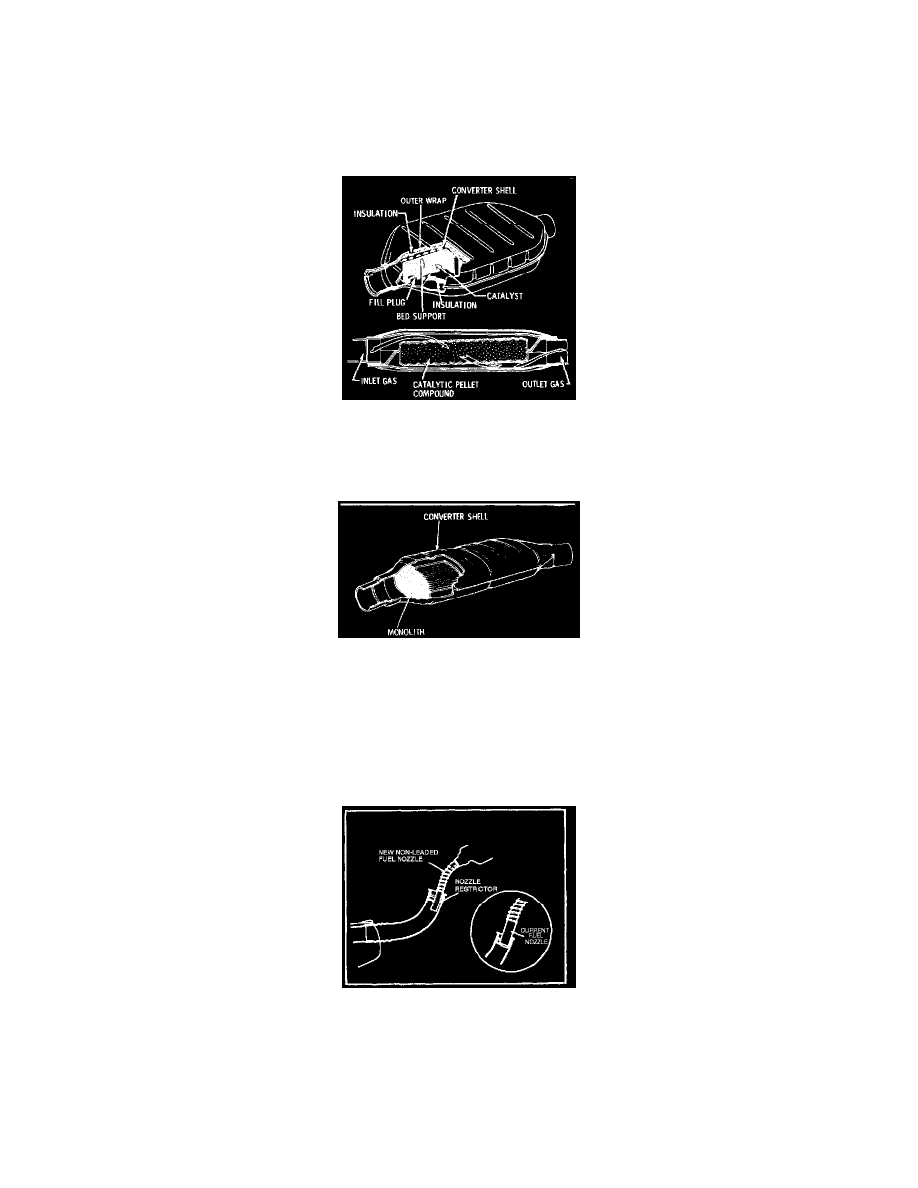C 20 3/4 Ton Pickup 2WD V8-305 5.0L VIN H 4-bbl (1982)

Catalytic Converter: Description and Operation
PURPOSE
The catalytic converter reduces the emission of Hydrocarbons, Carbon Monoxide and Oxides of Nitrogen.
OPERATION
The catalytic converter remains unchanged while enabling a chemical reaction to take place which combines Hydrocarbons (HC) and Carbon
Monoxide (CO) with Oxygen to form water (H2O) and Carbon Dioxide (CO2).
Fig. 13 - Underfloor Converter
On 1975-79 vehicles, the catalyst is structured in the form of pellets--Fig 13.
Fig. 14 - Monolith Converter
On 1980-82 vehicles, two converters are used, the underfloor converter--Fig 13 and a honeycomb monolith converter--Fig 14.
The catalyst consists of a porous substrate of an inert material, coated with platinum and other noble metals--active catalytic materials.
Due to its high operating temperatures, the underfloor converter--located in the exhaust system between the exhaust manifold and muffler--requires
heat shields to protect chassis components, passenger compartment and other areas from heat related damage.
Fig. 15 - Fuel Tank Filler Safety Neck For All Vehicles Equipped With Catalytic Converters
A smaller diameter fuel filler neck prevents system contamination by not allowing the larger diameter leaded fuel nozzles to be inserted--Fig 15.
CAUTION: Use unleaded fuels only. Use of more than a very small amount of leaded fuel will ruin catalyst.
NOTE: Periodic maintenance of the exhaust system is not required; however, if the vehicle is raised for other service, it is advisable to check the
general condition of the catalytic converter.
